David vs Goliath Moment in Indian Politics
As the political temporal and spatial scenario heats up, the fight for the PM post too has been colossally spurted for a big change. Some describe the battle as one between “David versus Goliath,” as they think that it will be the meek who will overcome the mightiest like in the battle of Philistine and Israel. The two major parties in India, Bharatiya Janata Party and Congress have shared their bits of successes and the newly etched Aam Aadmi Party is making inroads into the political landscape. While the battle is between numerous players, three emerging ones include Narendra Modi, Arvind Kejriwal and Rahul Gandhi.
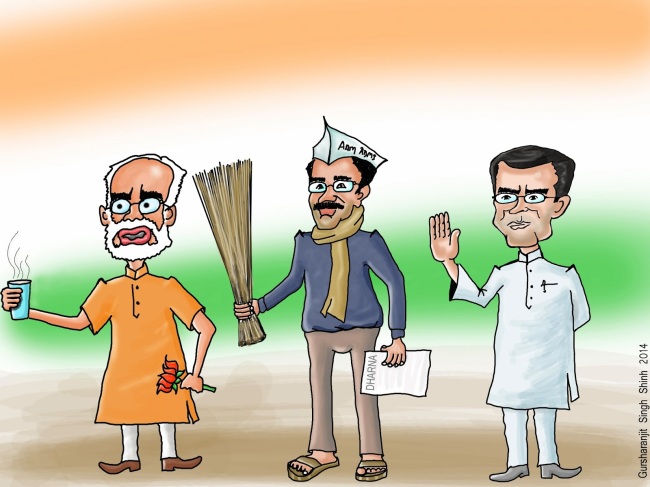 Pic Courtesy: http://gursharanthecartoonist.blogspot.in/
Pic Courtesy: http://gursharanthecartoonist.blogspot.in/
The enormity of “Brand Modi” has been carefully crafted over several months on lines of development, governance and administration with employing of new methods of campaigning. While Rahul Gandhi’s PR works have started rather lately. On the other hand, AAP has grown out of the Jan Lokpal Bill protests and made corruption as an issue for the coming elections. It is truism that corruption is a worry with Transparency International validating the point by ranking India at 94th Position worldwide, but will it be sufficient to climb the ladder to of 272+ in Lok Sabha elections, is a matter of question.
As a first, BJP and Congress are giving footage shot by themselves to media persons, which many feel is being done to manipulate the shots and depict a large gathering. The recent spate of words shared between AK-49 (as Modi addresses Arvind Kejriwal), and Narendra Modi has added fuel to the election build up and has dominated the front pages of newspapers. This time around new symbols of protests have come up: eggs, inks, derogatory comments, stone-pelting, and pepper spray, among others. India has 814 million registered voters this year, and the battle is gradually narrowing to Narendra Modi vs Arvind Kejriwal. Now who he is the Goliath and who is David, only time will tell. The next 49 days are surely going to be a cynosure for every Indian.
The unfortunate story on foreign land continues
If you are an Indian in the mainstream sense, you’ve got to be into at least two, if not all three, of these things: Chai, Cricket and Bollywood. Cricket seems to be more sought after. Being conditioned to the roars of sixes and fours and the ballyhoo surrounding the players, we have engrained cricket in our thoughts and have not been any lesser than a fanatic. Given the dismal performances in foreign lands, should we expect less? While the Indians have been dominant at home, their record outside the sub-continent is poor with a win-loss ratio of 0.75 in 44 Tests, while in top Test nations like Australia, South Africa and England, the win-loss ratio dips further to 0.50.
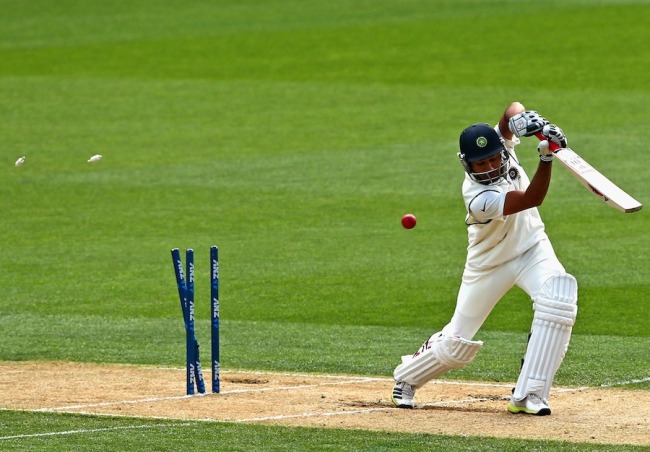
Pic: Rohit Sharma isn’t a match to the feary bowling of Corey Anderson (Source: Getty Images)
Such is the dichotomy that, the Indian media, adages them as ‘Tigers at home, Lambs Abroad.’ The nucleus of young players, have to deliver in environments not tailor-made for gargantuan batting exploits. Also, for the gross wickets that win a match, India needs fast bowlers who can fling it consistently, without breaking down. Only then can India be a genuine contender in matches outside the sub-continent. The 2013 Champions Trophy win seems to be fluke given the recent debacles. The nightmares of playing abroad got revisited in the recent series.
The irony is that we gain the numero uno spot in world rankings at home, and within months, lose it on a foreign ground. Problems in biological clock management, reading conditions and pitch along with facing short-pitch deliveries have always been a bolt-from-the-blue for the men-in-blue. At a time when we have world class facilities to train on ‘cemented pitches’ and bowling greats like Mc Grath and Lilee heading MRF Pace academy, do we still need to crib about the absence of such pitches in India? But this problem is also not exclusive to the Indian team. When England, Australia or New Zealand come to Asia, they land in a soup too. So, who is to blame for this inconsistency? Is this complacency on part of cricketers? Or the wrong judgment of conditions? Or mis-managed scheduling of games? I would assert larger blame to the latter.
Solutions–
- Have psychotherapists on board to help tackle pressures, after all it is both a mental and physical game.
- BCCI needs to give away the misconception that a very good player can be a good coach.
- The need is to develop the thinking that cricket is a team game and game should not suffer due to sponsorships.
- Send as many players as possible to feature in County cricket.
- The BCCI should stop being insular and develop a test squad that can play in all conditions. But far too much time is spent in courts and fighting administrative fires.
To sum it all, we have probably taken the following line too seriously, “All is fair in Love and Cricket.”
Let’s make news!
There’s a saying, “When a dog bites a man it is no news, but when a man bites a dog it is news.” Such is the importance of arbitrariness, unusualness or novelty in the values of news. Recently, Samajwadi Party minister, Azam Khan was in news for his detention at the Boston Airport, USA. But, was being a muslim was the reason behind it? Was the uproar and cancellation of trip justified? Well, it seemed no less than a political goal.
A less number of people would have remembered his trip to US, if it would not have been cancelled. This was a piece of hot cake and a fresh controversy for news channels, which will surely help SP to garner support in the upcoming elections.
Akhilesh Yadav, Uttar Pradesh Chief Minister had to give a lecture on Kumbh Mela at the Harvard University. But detention/questioning of his colleague led him to cancel the program. Concerned that its appeal among Muslim voters was dimming, Uttar Pradesh’s ruling Samajwadi Party is on an overdrive to hardsell its boycott of a Harvard lecture.
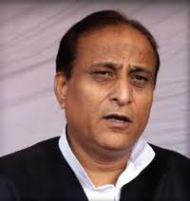
Pic: Azam Khan, Cabinet Minister of Uttar Pradesh, India
Azam Khan also went on to blame the External Affairs Minister of India, Salman Khurshid for persuading the US Customs and Border Protection wing of the Homeland Security to make such detention. This sounds really funny! I wonder the amount of influence India has on USA, and the time US authorities have to pay heed to such requests, if made. I can’t just figure out what sadistic pleasure will the Salman Khurshid derive through this!
A SP functionary says, “Our minority vote bank had been dented owing to the killing of a Muslim cop and the 28 plus communal flare-ups but we hope all that would be a thing of past.” The party is making the most of the opportunity given to it.
SP national general secretary, Ram Asrey Kushwaha added that Akhilesh Yadav’s move “would send the right message among the Muslims”.
Ironically, when former Indian President A P J Abdul Kalam, was twice subjected to frisking at New York’s JFK Airport by US security officials, he didn’t create such a ruckus. India’s then ambassador to the US Meera Shanker was patted down by a security agent in Mississippi in December 2010. But they relented themselves from extracting gains from their experience of frisking.
I would say that the common man needs to identify such tactics and should not get maneuvered according to the whims and fancies of political parties. Because they are not worried much of the populace but are relieved of the fact that they made news.
Should photocopying of textbooks be banned?
Many of us must be aware of the surge by the publishers and few policemen against photocopying of textbooks. They intended to bring a copyright action against Delhi University and a tiny photocopy shop licensed by it, seeking to restrain them from supplying educational course packs to students.
The sudden action flummoxed many, but fueled up the intellects to discuss about the issue. Basically, for those not familiar with the term, course packs are compilations of limited excerpts from copyrighted books, put together painstakingly by faculty members in accordance with a carefully designed syllabus and teaching plan.
The publishers are seeking an outright ban on all course packs, even those that extract and use no more than 10 per cent of the copyrighted book. Under the United States of America law, reproducing up to 10 per cent of the copyrighted books is “fair use” of a copyrighted work, and therefore legal.
In contrast, India is a developing country, with poorer students and more severe educational access constraints. Our system is a vulnerable one which requires the technique of cheap priced good education.
The section 52(1) (a) of the Indian constitution embodies the fair use exception and permits any fair dealing of a copyrighted work for the purpose of research and private study. Such exemptions reflect a clear intention to exempt core aspects of education from the private sphere of copyright infringement. Devitalizing these exceptions at the behest of publishers will strike at the very heart of our constitutional guarantee of a fundamental right to education for all.
The fact that majority of educational textbooks are priced above the affordability range of an average Indian student is well known. The claim by publishers that course packs would destroy their market for books and put them out of business is therefore highly questionable.
If a person needs only an extract from the whole book, he cannot afford to buy the whole book worth thousands. That would be foolish. Yes, there are libraries where books can be read. But, you never know that the same book is available at the time of need or not.
Slashing of rates may be a positive step in this direction. Let’s hope that the publishers will give a thought to it, apart from thinking of minting more money.
Dadasaheb Phalke is not the Father of Indian Cinema?
The Indian film fraternity is busy gearing up for the 100 years’ celebration of Indian cinema. Amidst all the fanfare, Pune based brothers Vijay and Anil Torne have challenged its very foundation. According to them, it wasn’t Dadasaheb Phalke but their father Dadasaheb Torne who had produced the first film of Indian cinema, ‘Shree Pundalik’, thereby becoming the rightful claimant to the ‘Father of Indian Cinema’ title.

Pic: Newspaper Advertisement of Pundalik of 25th May 1912
“The play was shot in Mumbai at Lamington, Tribhuvan and Vitthalbhai Patel roads. By this time, my father had exhausted all his money. He again approached Bourne and Shepherd company which agreed to process the film in exchange for the Williamson camera. The film was shipped to London where a negative and positive were developed and the positive was sent back to my father for screening,” Anil said.
Ramchandra Gopal popularly known as Dadasaheb Torne had released it on 18th May 1912 at the Coronation Cinematograph, Girgaum, Mumbai. Experts believe that Torne had missed out on the recognition he deserved, because of a few technicalities. Firstly, the movie was a shooting of a popular Marathi play and secondly, it was shot by a British cameraman, Johnson who developed and kept the negatives of the film in London giving Torne only the positive print to bring back home.
The point I want to make is that William Bolts is considered to have made the first attempt in printing a newspaper in India, but James Augustus Hicky is considered the first one to run a paper. Similarly, Torne should also be given some recognition though that might be petite as compared to that of Phalke.
Recognizing the first attempts in any field, help in dissemination of correct information as well as it makes people inspired to focus their work in those directions. I support the effort by his sons. Do you?
The curious case of Katju!
Accept it or not. Like it or dislike it. Justice Markandey Katju will end his term as the most controversial and outspoken Press Council of India Chairman. His single comment on an issue gives a lot of food for thought and airtime to television news channels who inadvertently say, “Today India is hearing. The people of India needs an answer!” Sigh! Even Ekta Kapoor’s serials were less dramatic!
Sometimes, I wonder that is every and any kind of publicity really the best publicity? Well, the likes of Rakhi Sawant, Sherlyn Chopra, Poonam Pandey might now see a lot of people joining their bandwagon driving the media persons around them. Latest yet unnoticed entry is Mr. Katju. First of all, I respect Mr. Katju a lot. He has shown the guts to come and speak in public sphere time and again against ill-practices in states against media and the wrongdoings by media itself.
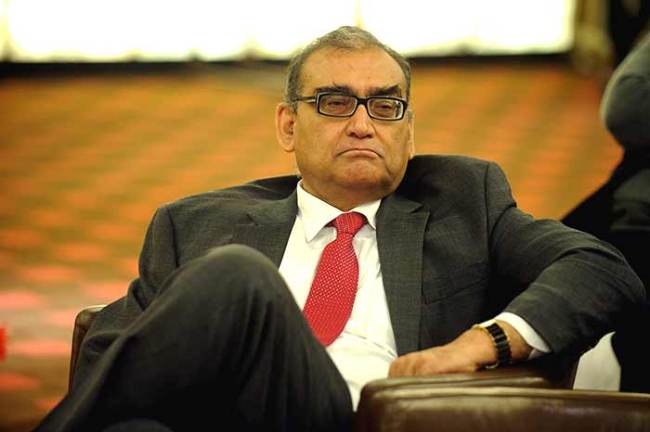 Pic: Retired Supreme Court of India Justice Markandey Katju
Pic: Retired Supreme Court of India Justice Markandey Katju
But, some of his statements have been perplexing. The latest jaw-dropping statement made by the Retired Supreme Court Judge is that, “Pakistan is a fake country, and one day it will reunite with India along with Bangladesh.” At a time when both the neighbor countries are disturbed internally and India’s foreign policy has taken a beating, such statements won’t amuse many.
He may confuse you with his words many a times. When he sees that he is in danger then he says that he has made that particular statement as a citizen of India, and when he sees that he has to take decision, he asserts his authority as a retired judge. Swapping roles fast, eh?
He further goes on to say, “A fake country was created in the name of Pakistan. It is an artificially created entity by the British to make Hindus and Muslims keep fighting with each other, to stop India from becoming a powerful industrialized nation,” he said, answering questions after a symposium on ‘Reporting Terror: How Sensitive is the media?’ on 07 April 2013.
I am not against his statement but I do not like the timing as well as the free publicity element behind it. Without digressing from the subject, I would say that unless the politicians stop mixing their profession with religion and avoid from calling for caste based voting, there shall not be any solution or occurrence of merger between countries.
Once he said, “Ninety per cent of Indians are idiots. You people don’t have brains in your heads.” Subsequently, a PIL was filed against him and he eventually said sorry.
If that wasn’t enough, read his one more remarkable statement! On September 3, Justice Katju had written an article in The Hindu, in which he, inter alia, went on to say:
“The level of intellect of many teachers is low, because many of them have not been appointed on merit but on extraneous considerations. To give an example, when I was a judge of Allahabad High Court I had a case relating to a service matter of a mathematics lecturer in a university in Uttar Pradesh.
Since the teacher was present in court I asked him how much one divided by zero is equal to.
He replied, Infinity.
I told him that his answer was incorrect, and it was evident that he was not even fit to be a teacher in an intermediate college. I wondered how had he become a university lecturer.”
Justice Katju claims that anything divided by zero is indeterminate. He is wrong and the lecturer was right because any non-zero number divided by zero is infinity. It is zero divided by zero that is indeterminate.
While one can understand the plight of the poor lecturer who did not have the courage to correct the judge hearing his case, I am appalled at the timidity of “some of the top senior academicians” of Jawaharlal Nehru University, to whom Justice Katju narrated the incident.
Well there a many startling statement made by him, but they cannot be put in here.By the way another one was, when he said that, “Sanjay Dutt should be pardoned because he was part of Munnabhai film, spreading Mahatma Gandhi’s ideologies…” And the list goes on.
Himmatwala!
The much awaited film ‘Himmatwala’ opens with Sonakshi Sinha dancing to the tune of a disco number: “Thank god, it’s Friday!” After seeing this flick one would surely not say so!
Holding allegiance to the 1983 original Himmatwala, this movie has all the ingredients of a moony masala film. Sajid Khan’s entertainer, ‘Himmatwala’ starring Ajay Devgn and Tamannah Bhatia will disappoint the critics but has chances to get good box office collections owing to its good promotion. Sajid Khan surely needs to be honored with an IIM Ahmedabad MBA degree for getting audiences for this movie!
Ajay Devgn, (Ravi) is an action master who returns to his village to find his mother (Zarina Wahab) and sister (Leena Jumani) banished by the evil sarpanch Sher Singh (Mahesh Manjrekar) and his brother in law Narayan Das (Paresh Rawal).
How the action master along with his lover girl (Tamannah) tackles the odds with the help of divine mediation and a CG enhanced tiger is what the film is all about. Along the period, there are ample skits and scenes to compensate for the lack of a better plot and sense of logic.
Nonetheless, performances of certain characters make the film bearable. Paresh Rawal as Narayan Das is commendable. He literally reminds of the comic legend Kader Khan and his witty dialogues, something that has been missing in films these days. Rawal’s impeccable performance in the film proves that character artists are either not being used appropriately or rather being abused nowadays.
The props and the sets are in concurrence and the colors are jarring enough to remind of Doordarshan’s pre-telecast static screen days, but despite the trickery the black and white spoof on Hitchcock’s ‘Psycho’ shower scene, what lacks is the right approach to making a regressive age old story of revenge and justice.
It is a film devoid of cinematic aesthetics. It seems that the filmmaker doesn’t really believe in winning applause from critics, for he makes films solely with the intention of entertaining the audiences.
Tamannaah Bhatia as Rekha looks promising. She is pretty, delicate and good at her job. And last but not the least, Ajay Devgn, without whom the film wouldn’t have been possible, will enthrall his fans yet again.
One is left confused when we hear lines like- ‘Main tumhe ek baar kho chuki hu, dubara nahi khona chahati,’ whether the film is a tribute to its era or is a spoof (when Ajay reminds Tamannah it’s the 80’s and she should tear her dupatta and cover his wound), or a cross breed of the both?
The film can bore you with tired cliches you thought you’d seen the last of – the hero’s ‘maa ki kasam’, his unfortunate sister who only exists to be raped by the villain’s henchmen and tortured by her in-laws, the villain’s spoilt but good-hearted daughter who falls for the hero much to her father’s disdain, and even an old foe who turns up at a crucial moment to help the hero in return for sparing his life earlier, that character, by the way, is played by a tiger!
Sajid makes an attempt to pay homage to the cinema of yore, but what he delivers makes you sit motionless for most parts. The romance lacks fire, the drama is devoid of intensity, even the action is plain ordinary.
Verdict: On the whole, Himmatwala fails as a film. Movie has over-the-top melodrama and number of senseless twists and turns. The film is too long to bear as the director has hardly experimented or done anything to add a path-breaking punch in the movie.
Spare the Sport!
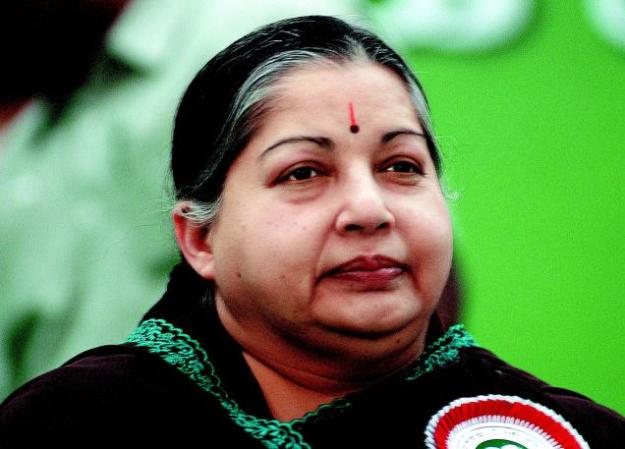 Pic: Tamil Nadu Chief Minister, Ms. Jayalalithaa
Pic: Tamil Nadu Chief Minister, Ms. Jayalalithaa
Tamil Nadu Chief Minister, Ms. Jayalalithaa seems to have scored political runs on the Chennai wicket against the Sri Lankan players, in an attempt to garner public support ahead of elections. Her decision to call for protests against the participation of Sri Lankan players in the Indian Premier League is becoming a hot controversy. By declaring that the State government will permit the matches to be held in Chennai only if the organisers provided an undertaking that no Sri Lankan players, umpires, officials or support staff would participate in these matches, she has mixed up the two far apart poles- sports and politics.
But what’s astonishing to note is that, the IPL governing council has given into the demands and favored Ms. Jayalalithaa’s idea. Such a decision was least expected from the “good-samaritan-outlook” Council.
Undoubtedly, there will be long-term repercussions on this gentleman’s game. It is pertinent to note that India’s foreign policy has become shaky nowadays and is influenced by the state ministers. Ms. Jayalalithaa appears too eager to surrender her responsibilities. Far from extending assurances on the law and order front, she voiced her apprehension that the participation of Sri Lankan players “will aggravate an already surcharged atmosphere and further offend the sentiments of the people” of Tamil Nadu.

Pic: Sri Lankan players who played in the last IPL
Why wasn’t this issue raked up in 2012, 2011 or 2010 during the then IPL matches? Just because the elections are scheduled in a couple of years, such ballyhoo has been created? Incidentally, DMK Supremo, M. Karunanidhi has voiced in the same line. If such is his plan of action, then he should prompt his grandson Kalanidhi Maran, to disband all Spicejet flights flying to Sri Lanka.
Sports is a medium where people come together and celebrate with each other. Why does one need to stop it? How are the International issues and this game of cricket connected? The effects of such divisive politics will surely deteriorate the game.
Ms. Jayalalithaa’s interference in a sporting event and its organiser’s meek surrender will only create more animosity between New Delhi and Colombo and will do little against the Rajapaksha regime. Former Sri Lankan cricket captain, Arjuna Ranatunga has already raised his voice on this and has expressed desire for pulling out of Sri Lankan players from the whole tournament. The tit-for-tat politics will achieve nothing at the end of the day. We will only end up creating another Kashmir-like situation in south. The human rights violation in Sri Lanka is for the Sinhalese and the Tamils in that country to settle and not the responsibility of populist Indian parties who do nothing but create more controversies for the country.
The ballyhoo around Sanjay Dutt
The mills of justice in the 1993 Mumbai blasts case may have taken 20 years to grind and deliver a verdict, but the mills of “grind doctors” for superstar Sanjay Dutt have gone into overtime within minutes of the verdict to secure a pardon which he arguably doesn’t deserve.
Is law not same for all, irrespective of their status and position? Then, why everyone is questioning the recent Supreme Court judgment in regard to actor Sanjay Dutt? Why nobody is saying anything about death penalty to mastermind Yakub Memon in the 1993 Mumbai blasts case? Is it because Dutt is a Bollywood actor and son of two film legends- Sunil Dutt and Nargis? If this is the case, then India should have two sets of laws- one for layman and another for the rich and powerful.
Many voices of influential persons have erupted in support of pardon to Sanjay Dutt on a myriad of grounds. Be it former Supreme Court Judge and Press Council of India Chief, Justice Markandey Katju or Bollywood actor and Rajya Sabha MP Jaya Bachchan, everyone seems to be getting carried away by the screen persona of Sanjay Dutt.
“Sanjay Dutt’s parents have done social service. He himself has done some good things like promoting Gandhian philosophy in movies. He has two small children and suffered for 20 years,” Katju said.
But is relief from the aftermath of conviction all about being a nice guy or how kind, wonderful and successful your parents and siblings are? I have great regards for the actor, but the society should see that he needs to be tried equally as is the case with other convicts.
The Dutts have long been Congress loyalists. Sunil Dutt was a Congress MP and the party nominated his wife Nargis to the Rajya Sabha. The actor’s sister, Priya Dutt is now a Congress MP. There are also allegations against Justice Katju of favoring congress led states during his reports on misuse of media in states of India.
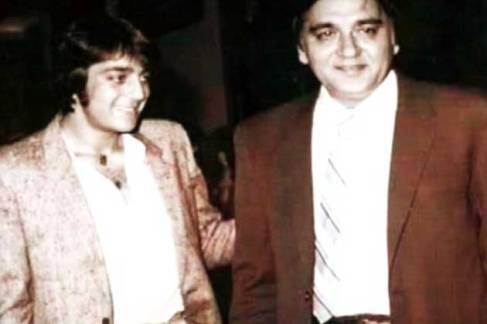
Pic: Sanjay Dutt (Left) with his father Sunil Dutt (Right)
What does the common man understand from this situation? He is always swayed by one or the other statement. Why should we bend law for the rich & famous? The questions linger on.
Due to terrorist interactions, and illegal possession of a 9mm pistol and an AK-56 assault rifle on 19 April 1993, Sanjay was arrested under the Terrorist and Disruptive Activities Act (TADA). He spent 18 months in jail until he was granted bail in October 1995 by the Supreme Court of India. He was later re-arrested in December 1995 and re-released in April 1997 once again on police bail terms. In 2006, the case opened for sentencing for all accused. The period between 2006-2007 saw Dutt spend 7 months in Arthur Road Prison and Pune prison on three occasions for arms offences. Although in 2006, Dutt was finally acquitted of any TADA-related offenses but was charged under the Illegal Possession of Arms Act.
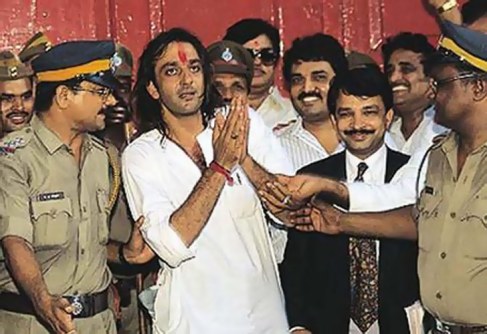
Pic: Sanjay Dutt leaving from the Yerwada Prison, Pune
In his first confessional statement, that he made to his father who wanted to know why he had been stashing deadly arms, Sanjay Dutt said, “Because I have Muslim blood in my veins. I could not bear what was happening in the city.” A crestfallen Sunil Dutt had then left the police headquarters.
Summing it up, I would say that the move to secure mercy for Sanjay Dutt is an act of lubrication of the law, laden with dangerous consequences. And yet, it appears that it has enough political and social momentum to sail through.
May the rule of law prevail, with equanimity.
Yes! Rape it is!
I was searching for story ideas for this blog. Checking the trends, reading newspapers, surfing on net, descrying through old stories. Alas! I found my subject. Such is the beauty of my chosen subject, that it may well qualify to be the most popular world of this year!Hold on your breath. Tighten your seats belts! Here it comes! The one and only-RAPE.
The spurt in it’s importance being given by the media nowadays has just mirrored the rising number of such cases.
The emergence of patriarchy, the one sided view of masculinity, the quashed pathos of women have marred over a period of time. The prevalence of It’s Okay attitude has only served to destroy the sanctity of the nation. It took just a huge protest by non-political forces, to awaken the sleeping minds of the ever so concerned lawmakers (December 16 gangrape in Delhi, India).
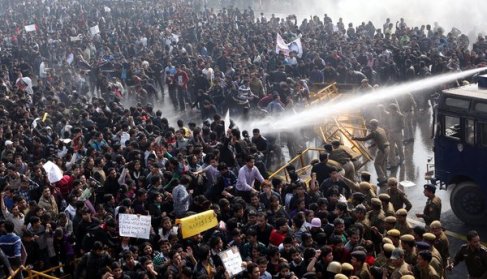
Pic: Protest against the December 16 Gangrape in Delhi, India
The dictionary meaning of word rape is the ravishing or violation of a woman. But is it really a stigma on the unblemished life of a woman? Well, the society feels so, as they get a new parameter to identify girls. It is the culprits who have lost their dignity. The woman needs to be applauded for being so strong, for being so rebellious.
By the way, Congratulations! The Indian Parliament’s lower house passed a landmark law on March 19 that sets tougher penalties for rapists and for police officers who refuse to file a woman’s complaint of rape, as well as criminalizing offenses such as stalking, voyeurism and acid attacks.
Ironically, as the lawmakers were busy discussing the new law in Parliament, a British tourist fractured her leg when she jumped from the balcony of her hotel room in Agra, the city of the Taj Mahal, to escape being molested by the hotel owner.
The new law, which the upper house is expected to pass till March 22, sets a maximum penalty of death in cases in which a rape victim dies or is left in a persistent vegetative state. Those convicted in incidents of gang rape, the rape of a minor or rape by a police officer or public official will be sentenced to a minimum of 20 years in prison, up from seven to 10 years.
A provision requiring government approval for the trial of police officers, officials, politicians and judges on rape charges also has been lifted.
For the first time, the law criminalizes stalking and voyeurism, acts of sexual harassment that have long been grouped under the benign euphemism- Love-teasing. Hereafter, acts of barbarism, occurring during religious and caste riots also will be treated as cases of aggravated sexual assault.
There was a lot of word in the past few days, about the need for capital punishment or castration as a deterrent. For once, I was also of the same view, given the public outrage and the intensity of such crimes. But think for a moment. If we’ll come up with it, won’t the rapist kill the girl and destroy all the evidence? The process of trial should lead towards this direction but not this fast. This may add to the existing woes only. Instead of making more stringent laws, India needs to implement existing laws. It should not introduce tougher punishment such as the death penalty, to prevent rape. Apart from other factors, the low conviction rate in the cases of rape is the biggest worry we have today and there is hardly any deterrence.
Some of the most interesting reactions to the Gangrape case of Delhi are worthy to be mentioned. Some said that the women should avoid wearing skirts or provocative clothes to avoid rape. I only have a humble question for them. Do you think that the 6-year old girl or the 84-year old grandmother was dressed inappropriately when they were raped!?
One more quote was from a spiritual leader, blaming the girl for her fate and advising her to consider the rapist as her brother and remember god. Probably, he hasn’t seen much of Bollywood movies, wherein the favourite dialogue to show such scenes is- Bhagwaan Ke Liye Mujhe Chod Do! (Please leave me for the sake of God) to which the rapist vexatiously replies, Agar tujhe bhagwan ke liye chod dunga, toh mera kya hoga!? (If I’ll leave you for god, what fun will I have)
Admit it or not, the portrayal of women in various forms of media has been dismal many a times.
As the bullet theory of mass communication suggests that an intended message is directly received and wholly accepted by the receiver in its pristine form, such messages tend to influence people at large. I even don’t understand the intention behind making crime shows for television! Apart from minting money, they are only providing ideas on how to commit crimes smartly.
In the case of women, our right of interference should be limited entirely to giving good education. Women must be put in a position to solve their own problems in their own way. According to me, cases related to terrorism and rape should be dealt with strongly and there should be no allowance of moving the higher ranked courts. But the problem is even the Judiciary doesn’t seem so clean. On 23rd January this year, in the Ghonda District of Uttar Pradesh, India, the Additional Chief Magistrate of a court molested a 21 year old woman and a minor, when they were testifying a case of kidnapping inside the closed chambers.
The possible solution to the aforementioned problems can be-
- There should be gender sensitization.
- The notion of masculinity needs to be revisited. The new male should be sensitive towards women, have values of empathy and be a family man.
- The parents need to teach their kids well and the communication gap between them needs to be reduced. Proper moral education should be infused at appropriate times in the minds of children.
- We need to look through the prism of crimes against woman in every public sector.
Lastly, I would say that it is the men who need to change more and be in that limit as compared to women, as it is the former who is forcing itself and bringing shame to humanity.
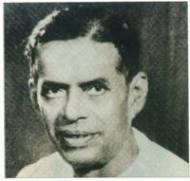
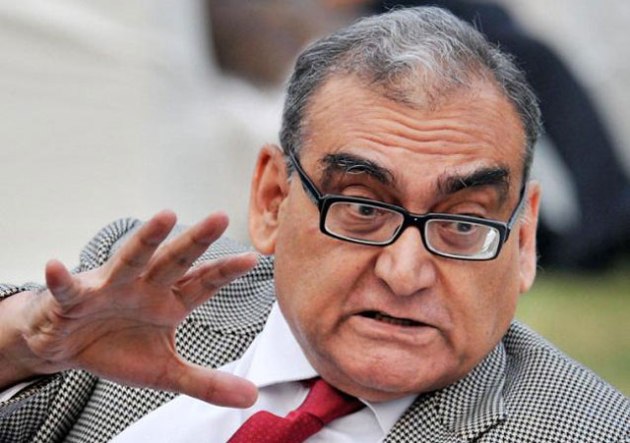



Recent Comments